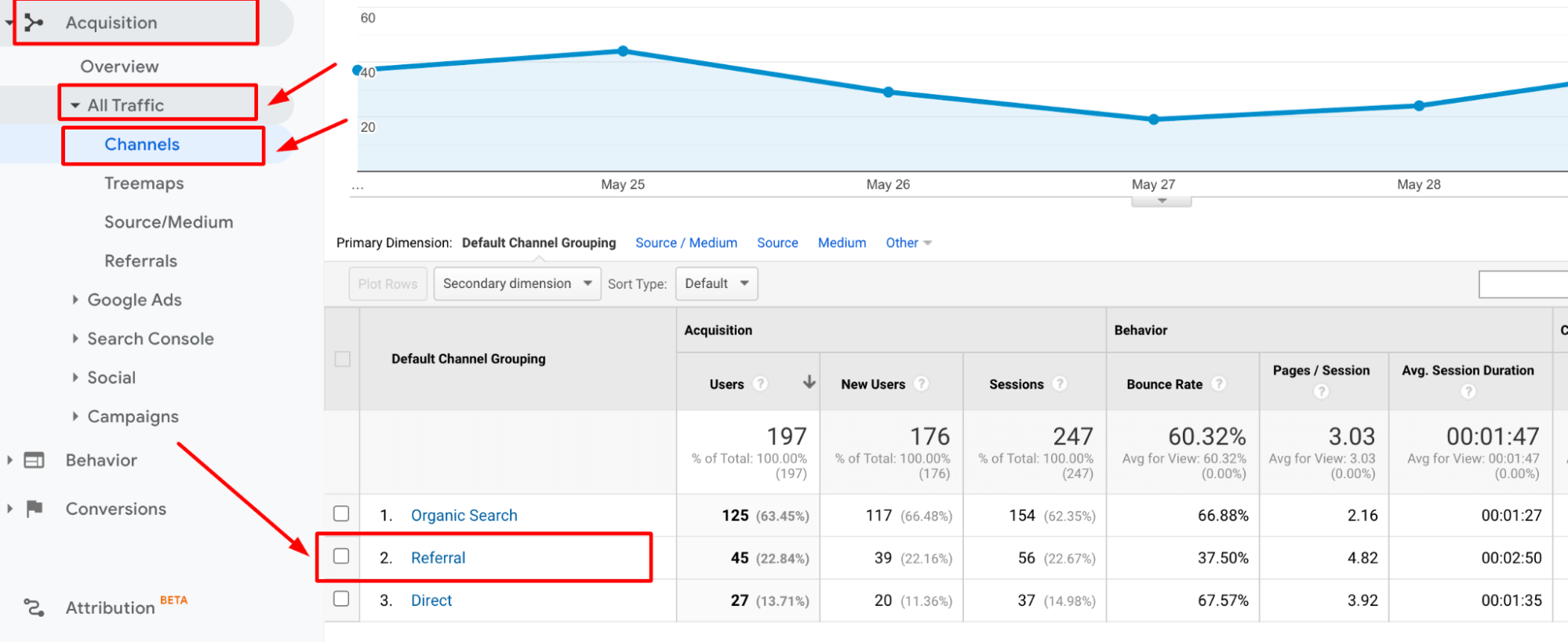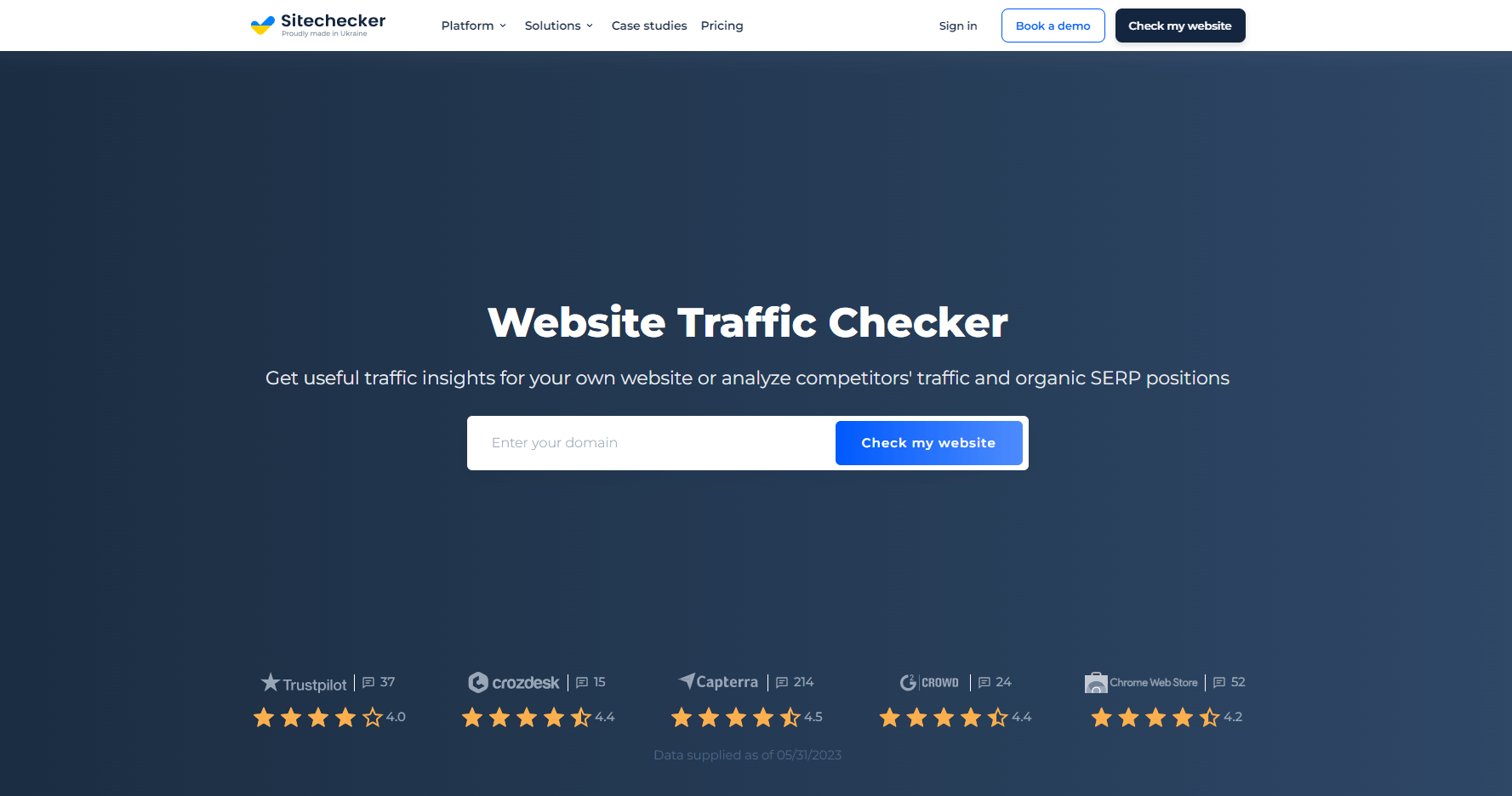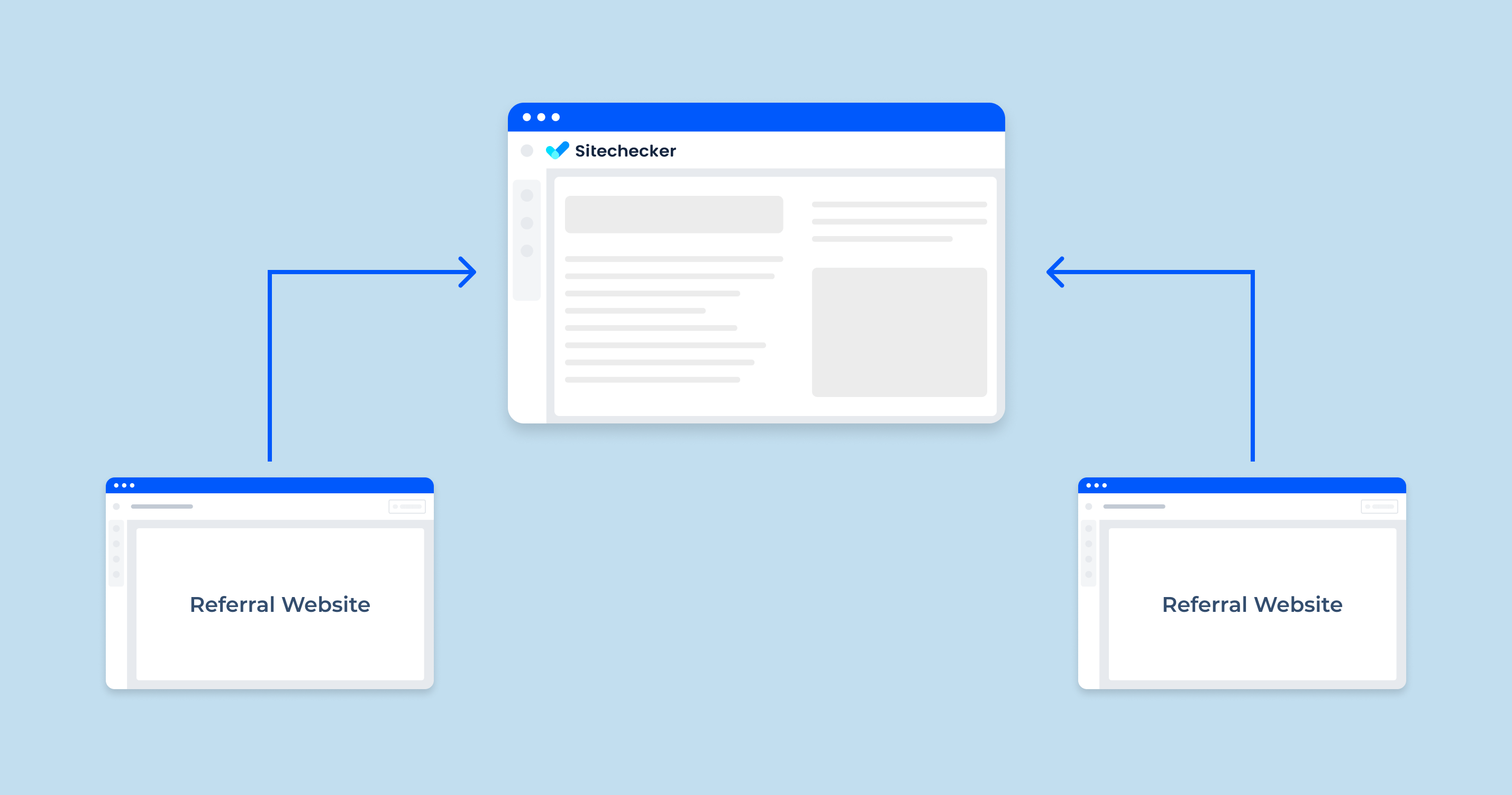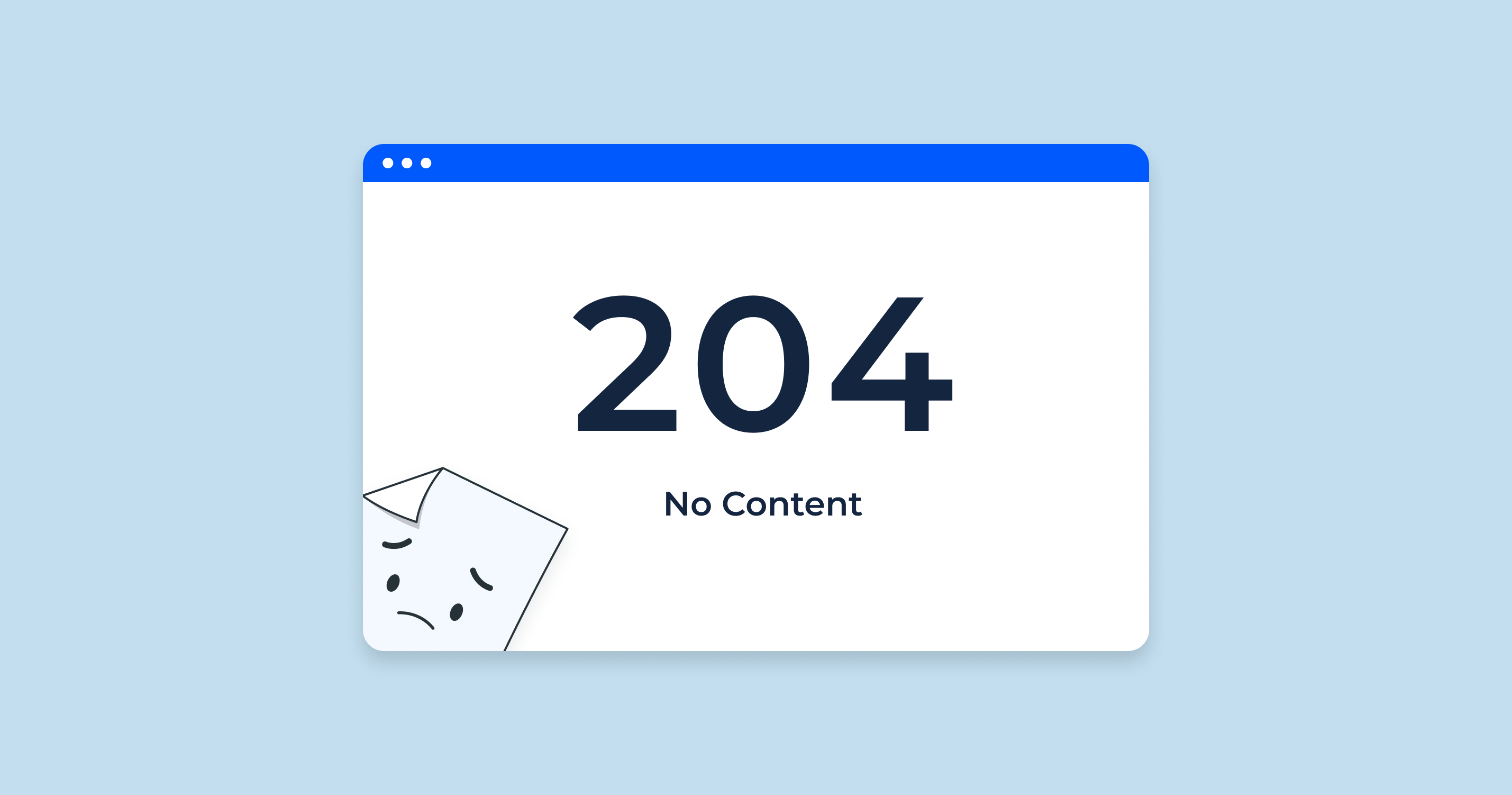Referral Traffic in Google Analytics is a type of users that comes to your website from other sites that are not search engines. When someone clicks on a hyperlink and is led from one site to another, the analytics data of this transition is considered referral traffic.
To be more specific, referral traffic in Google Analytics is identified when the browsers send an HTTP referrer header to indicate the URL of the webpage that referred the user to your site. If that URL is not a search engine (like Google, Bing, etc.), it gets grouped into the “Referral” category in Google Analytics.
Google Analytics provides detailed referral traffic data, including the number of visits from each referral source, the number of pages each user visited, how long they stayed on the site, the bounce rate from each referral source, etc.
This information can help website owners and digital marketers understand which external sites drive the most valuable visitors and inform decisions about partnerships, advertising, content strategy, and more.
You can find these statistics under the Acquisition > All Traffic > Referrals path on your Google Analytics dashboard.

Referral Traffic for Boosting SEO
Referral traffic is an essential cog in the comprehensive machine that is SEO. Here’s why its significant:
- Backlinks – The Trust Signals. Every time a website links back to yours, it’s a sign of trust, an endorsement if you will. Search engines, like Google, view these backlinks as trust signals, using them as a yardstick to measure your site’s authority and relevance. A healthy portfolio of quality backlinks can bolster your site’s ranking in search engine results, essentially turning referral traffic into a critical component of your SEO strategy.
- Boost in Visibility and Traffic. With a referral, you’re broadening the avenues that lead potential visitors to your website. This increased visibility invariably results in more visitors. Higher traffic often equates to more user engagement, sending positive signals to search engines about your website’s value.
- Relevance and Quality Traffic – A Winning Combination. What makes referral traffic truly worth its weight in gold is its relevance. When users follow a link from another site, they do so out of interest. Consequently, such visitors tend to be more targeted, leading to lower bounce rates and higher engagement. It’s a win-win situation for your SEO.
- Diversification – An SEO Safety Net. Over-reliance on a single source of visitors, such as organic search, is akin to placing all your eggs in one basket – a potential SEO risk. Changes to search engine algorithms could result in a significant drop in the number of users. Diversifying your visitors’ sources, with the referral being one of them, can act as a safety net, helping your website maintain its robustness in the face of these changes.
- Relationship Building – The Pathway to Success. The pursuit of referral traffic often necessitates forging relationships with other reputable websites, influencers, and brands within your industry. These relationships can unlock doors to additional collaboration opportunities, amplifying your website’s visibility and expanding the potential for even more backlinks.
Keep in mind, though, that not all referral traffic is created equal. Links from questionable or low-quality websites may do more harm than good, potentially denting your SEO efforts. Google’s sophisticated algorithm rewards authentically earned links while penalizing websites that employ manipulative tactics to secure unnatural links. As such, your focus should always remain on securing high-quality and valuable users.
In a nutshell, referral traffic is not just an asset; it’s an investment in your website’s visibility, credibility, and search engine ranking.
How to Secure More High-Quality Referral Traffic
Some tips on how to secure more high-quality referral traffic – a potent force in any successful SEO strategy.
- Crafting Engaging Content. Quality content is the beating heart of any successful SEO strategy. Develop content that is informative, captivating, and unique. People naturally want to share and link to your content when you add value. This could range from insightful blog articles, eye-catching infographics, and explainer videos, to comprehensive guides or whitepapers.
- Venture into Guest Posting. Guest posting on industry-related, reputable websites is a superb strategy to drive quality referral users. It’s a win-win: you lend your expertise to a broader audience, and you get to insert that crucial backlink to your site. The result? You build authority and garner referral traffic.
- Influencer Engagement. Networking with influencers and thought leaders in your field is a goldmine. If your content aligns with their messaging, they might give it a shout-out or include a link to your site on their platform. Their endorsement can drive a significant surge in your referral link strategy.
- Active Participation in Online Communities. Engage with relevant online communities, forums, and social media groups. Offer genuine value and insights without overtly promoting your brand. Then, gently guide interested users to your website for more information, hence increasing your referral traffic.
- Establishing Strategic Partnerships. Collaborating with businesses or blogs within your niche can exponentially boost your visibility and credibility. You could co-author content, sponsor events, or mutually promote each other’s offerings. This cooperation often leads to high-quality referral traffic.
- Leverage Social Media. Social media platforms are fertile ground for increasing your visibility. Engage with your audience, share meaningful content, and you’ll see an uptick in the number of visitors directed to your site from these platforms.
- Optimizing User Experience. Finally, don’t forget your website’s user experience. If your site is a joy to navigate, looks professional, and loads swiftly, visitors are more likely to stick around, share your site, and return, all of which can organically enhance your referral traffic.
Above all, remember, the quality of referral traffic makes the difference. High-quality visitors typically comes from reputable sources relevant to your niche, attracting visitors who are genuinely interested in your content or services. These visitors are more likely to engage with your site, become leads, and even convert into customers.
Mitigate the Impact of Bad Referral Sources
Bad sources, which lead to low-value visitors, can originate from various circumstances. Often, they emerge from bad sites or spam websites that link to your site in an attempt to appear more credible or lure you into visiting their pages through your analytics data. They can also stem from websites that scrape content from other sites without permission, thereby inadvertently sending low-quality traffic your way. Unrelated industry domains may also be culprits; visitors from such sites might find your content irrelevant, resulting in high bounce rates and low conversion rates.
Other bad sources include click farms, low-quality paid traffic sources, and even negative SEO attacks, all of which bring users that rarely engage meaningfully with your site. Instances of trackback spam, where your site is bombarded with link notifications from spam or low-quality sites, can also lead to low-value users.
Lastly, unmoderated blog comments that include links to low-quality or irrelevant sites can contribute to the problem. Identifying these issues and taking mitigating steps is crucial to maintaining a strong, efficient SEO strategy for your website.
Minimize the Infiltration of Spam Traffic Within Your Analytics Data
Referral traffic represents the portion of visitors who land on your website via an external entity, such as a link located on a different domain. The magic of Analytics tools is in their ability to automatically discern the source that led the visitors to your website immediately before their arrival. This information is then showcased as referral traffic sources within your reports, with the domain names of these sources explicitly indicated.
An Analytics feature allows you to configure a filter to eliminate users being referred from particular domains. By executing such exclusions, you essentially obstruct any hits originating from the blacklisted websites from being included in your Analytics data. This strategy can be particularly useful in averting the contamination of your legitimate data with spam hits. The modus operandi of a referral exclusion filter is to compare the filter pattern you input with the hit values discovered in the Campaign Source dimension.
To ensure that your tracking tags are correctly set up, use the Google Tag Manager Checker to verify that the correct filters and tags are applied across your site. This helps prevent misconfiguration issues that could skew your analytics data.
However, it’s important to understand that filtering domain referrals diverges from the function of the Property-level referral exclusion feature.
Filters serve to eliminate hits from your traffic stream entirely, meaning no sessions deriving from these hits will be noted. In contrast, referral exclusion operates by treating hits originating from the excluded sources as if they were direct traffic.
Competitive Analysis of Referral Traffic with Website Traffic Checker

Traffic Checker provides detailed insights into your referral traffic, identifying key sources, and assessing traffic quality.
Additionally, it facilitates a competitive analysis, revealing your competitors’ referral strategies. This data supports strategic actions like content development and backlink creation to manage referral traffic effectively.
Sitechecker’s Traffic Checker tool is a diagnostic and analytical aid that provides data and insights. To manage referral traffic effectively, you’ll still need to implement strategic actions such as developing compelling content, forming strategic alliances, and establishing quality backlinks.
Conclusion
Referral traffic, tracked by Google Analytics, is visitors arriving from external non-search engine sources. It is vital for SEO, increasing visibility, backlinks, and engagement.
However, some sources may lead to poor quality traffic, requiring mitigation strategies. Improving referral traffic involves engaging content, guest posting, influencer networking, community participation, strategic partnerships, and user experience optimization.
Tools like Sitechecker.pro’s Traffic Checker provide invaluable insights and require active strategy execution. In short, referral traffic is a key investment for a site’s visibility and ranking.
What is an example of referral traffic?
How is referral traffic calculated?
What is 'other' in Google Analytics referral traffic?
What is the difference between referral and social traffic?
What is the difference between referral and organic traffic?
On the other hand, referral comes from other websites that directly link to yours. These visitors arrive at your website by clicking a hyperlink on another site, not via a search engine.





